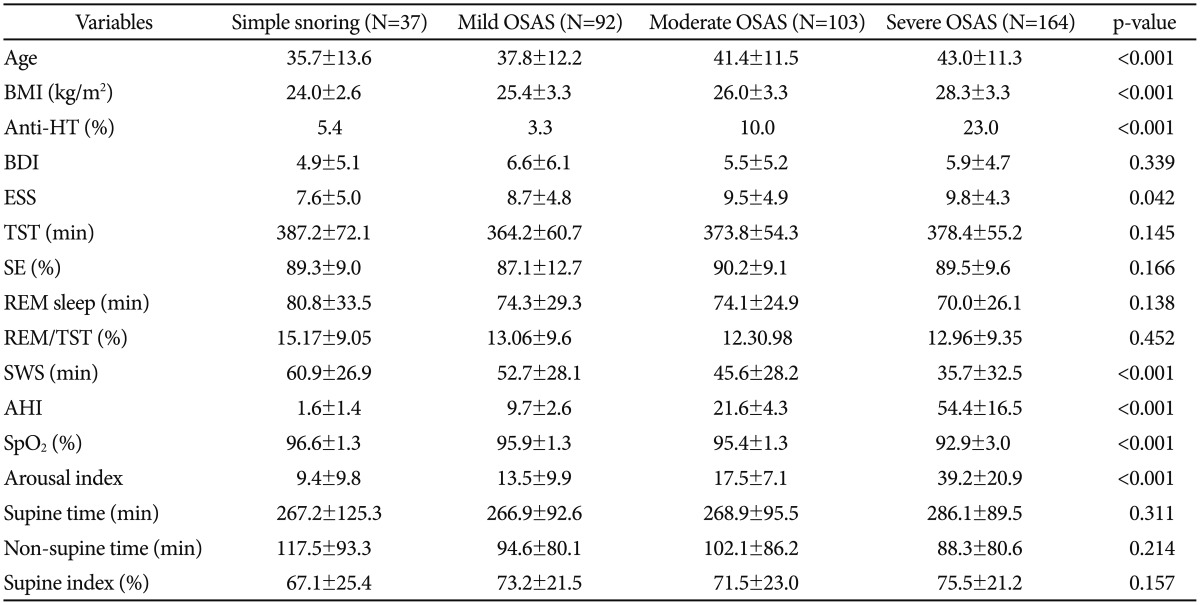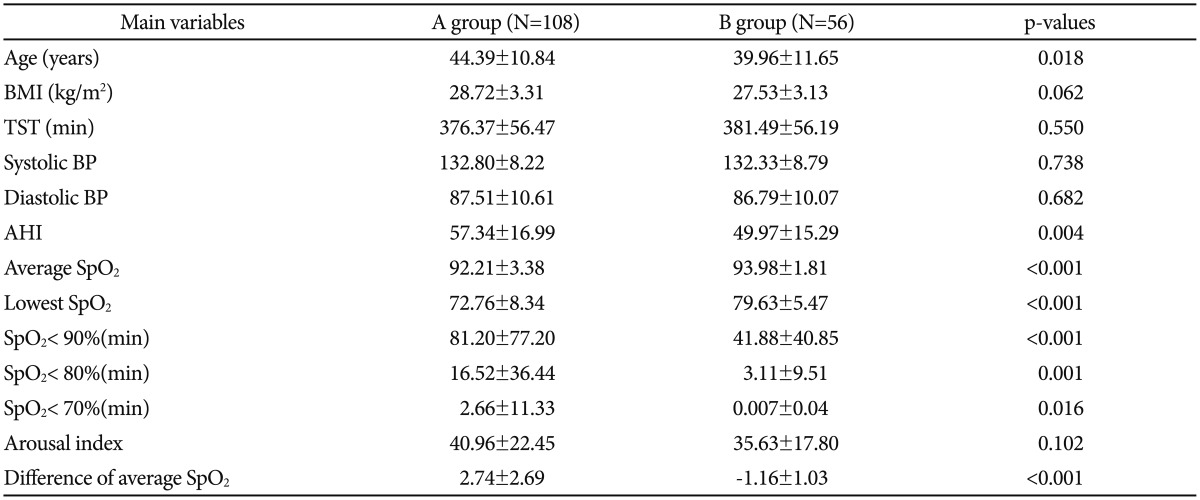 |
 |
- Search
| Psychiatry Investig > Volume 13(6); 2016 > Article |
Abstract
Objective
Methods
Results
Conclusion
Acknowledgments
References
Figure 1
The correlation between apnea-hypopnea index and the difference in the average oxygen saturations during rapid eye movement and non-rapid eye movement sleep, when controlled for body mass index, in the severe obstructive sleep apnea group (rp=0.229, p<0.05). N-REM: non-rapid eye movement, REM: rapid eye movement.

Figure 2
A: The correlation between apnea-hypopnea index and the difference of non-rapid eye movement-rapid eye movement average oxygen saturation controlling for age and body mass index is shown by a positive correlation (rp=0.336, p<0.001) in patients with severe obstructive sleep apnea syndrome in group A. B: The correlation between apnea-hypopnea index and the difference of non-rapid eye movement-rapid eye movement average oxygen saturation controlling for age and body mass index is not shown by a significant correlation (rp=-0.241, p=0.074) in patients with severe obstructive sleep apnea syndrome in group B. A group: average saturation (%) of NREM >average saturation (%) of REM, B group: average saturation (%) of REM >average saturation (%) of REM. REM: rapid eye movement.

Table 1
Demographic data and the data of sleep variables in each group of sleep disordered breathing subjects

Supine index: [Supine time/(Supine time+Non-supine time)]×100. OSAS: obstructive sleep apnea syndrome, BMI: body mass index, Anti-HT: antihypertensive medication, BDI: Beck depression inventory, ESS: Epworth sleepiness scale, SWS: slow wave sleep, TST: total sleep time, SE: sleep efficiency, REM: rapid eye movement, SpO2: peripheral capillary oxygen saturation
Table 2
Average oxygen saturation during REM and NREM sleep according to severity of sleep disordered breathing subjects

Table 3
The difference of NREM-REM average oxygen saturation correlation with AHI, supine position time, and oxygen variables adjusted by BMI in severe obstructive sleep apnea syndrome group

Difference of average SpO2: the difference between NREM-REM average oxygen saturation, Supine index: [Supine time/(Supine time+Non-supine time)]×100. r=partial correlation coefficient adjusted by BMI. *p<0.05, †p<0.001. N-REM: non-rapid eye movement, REM: rapid eye movement, AHI: apnea-hypopnea index, BMI: Body Mass Index, HTN: hypertension, Anti-HT: antihypertensive medication
Table 4
Comparison of subgroups according to average oxygen saturation in the severe obstructive sleep apnea syndrome group

Mean±standard deviation. Difference of average SpO2: the difference of NREM-REM average oxygen saturation. A group: average saturation (%) of NREM >average saturation (%) of REM, B group: average saturation (%) of REM >average saturation (%) of NREM. BMI: Body Mass Index, TST: total sleep time, BP: blood pressure, AHI: apnea-hypopnea index






